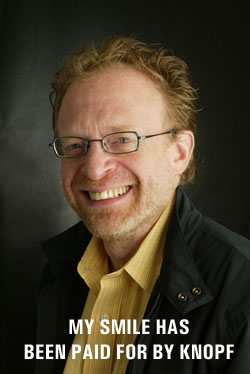As I write these words, there are a series of bills under consideration in West Virginia that would “protect” minors from any “obscene performance and materials” — which would, of course, include a transgender mother picking up their kid from school. These paleoconservative bigots have reframed such a common act as an apparent act of flamboyant exhibitionism, if not a new form of edgy performance art that will somehow turn every schoolkid into a gender-bending sex kitten. It is estimated that 1.6 million Americans identify as transgender. 19% are parents. In 2020, the murder rate of transgender people took just seven months to surpass that of cis counterparts. In other words, we have a moral duty to stick up for trans people, to respect their pronouns, and to ensure that they are able to live safely and without hate or targeted violence in our society. They are human beings. Just like the rest of us.
In such a dangerous and dehumanizing climate, it would seem quite logical to a surly and aging punk rock humanist like me to devote your newspaper pages to showing the impact that such harmful legislation will have on people. But that’s not what The New York Times is doing. Instead, it has permitted Pamela Paul — a smug and privileged dunce who was once married to an equally hateful and reactionary bedbug — to spew forth all manner of hateful columns against the dignity of trans people. Much like a 1960s white supremacist defending George Wallace, Pamela Paul wrote a repugnant and clueless column detailing how liberals could “learn” from Ron DeSantis. The Florida governor apparently “knows what he’s doing” in targeting trans healthcare, invading the privacy of trans university students, and otherwise declaring a war on trans people. Despite all these clearly horrific moves to dehumanize trans people which have been denounced by nearly every LGBTQ organization, Paul claims that DeSantis “may not be” transphobic and that any protest against this evil is merely “adopting a stance of moral superiority” that will “do us no good.” In other words, Paul’s hopeless head nods like a FOX News-watching bobblehead, approving of these cruel and discriminatory practices against people who have rich lives, promising careers, and big dreams.
But today Pamela Paul doubled down on her casual hatred for the “other” by writing a risible column defending J.K. Rowling, the Harry Potter writer who has ignobly morphed into one of the most prominent transphobes in Western culture. And in case the phony persecution complex wasn’t telegraphed strongly enough, Paul even compared the justifiable pushback against Rowling’s hate to the stabbing of Salman Rushdie, perpetuating the shitty stereotypical trope of trans person as murderer that was played for cheap titilation in Brian De Palma’s Dressed to Kill more than forty years ago.
In other words, Pamela Paul is an intolerant dinosaur cynically disguising her enmity with false parallels who simply cannot understand what is so fucking easy for the rest of us to understand. She actually has the temerity to write, “Nothing Rowling has said qualifies as transphobic.” Really? Beyond Rowling’s recent novel, which was a lengthy transphobic diatribe disguised as fiction, what about Rowling’s odious remarks about “people who menstruate”? Her pathetic Twitter performance last year on International Women’s Day? I’m a cis hetero man and I’m also angry about this. Rowling’s thoughtless and hateful remarks have been enough to warrant vociferous pushback from many. Is Paul trying to gaslight this response? It’s fairly effortless to imagine Paul stumping for George Orwell’s fascist nation in 1984, claiming that Oceania has always been at war with Eastasia.
Two hundred staffers and contributors have signed a letter condemning The New York Times‘s commitment to transphobia. What many of them have outright refused to do is call out the names of hateful demagogues who are spreading this noxious and completely unacceptable bile.
Pamela Paul collects a regular paycheck for spewing obfuscatory hate in a newspaper that reaches 8.6 million paid digital subscribers. Given that reach, I don’t think it’s a stretch to call Pamela Paul the transphobic answer to Charles Coughlin, who famously used his radio broadcasts to preach anti-Semitism in the 1930s.
The time has come for Pamela Paul to be fired from The New York Times. Let her join her fellow fascist Bari Weiss outside the Gray Lady’s walls and be truly free to reveal the hateful and intolerant conservative she truly is.
























